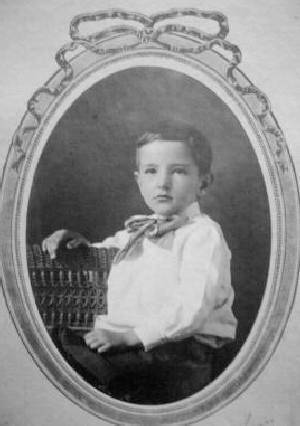
Figure 1.-- This boy's last name was apparently Goodlauden. The porrait was taken in 1909. Floppy bows were still commonly worn, but the luge bows of the late 19th century are not very common. |

|
We also know a great deal about neckwear in the 20th centuty. The photographic record provides a detailed history of neckwear trends. Floppy bows were still worn in the early 20th century, especially in the 1900s. A good example is 5-year old Harold Howes in 1903. We note younger boys wearing them, even some younger teenagers. We note by the later part of the decade that thy were less common and smaller sizes. We also note boys wearing neckties and bowties. Bowties seemed very popular in the early 20th century. Floopy bows rapidly went out of style after the 1900s although we still see them into the 1920s on younger boy. Neckwear after World War I by the 1920s began to become increasingly standardized with neckties and bowties. We also see some less note at mid-century some other types of neckwear like string ties and less some other less common styles. Boys after the mid-20th century with the increasing popularity of casual dress styles, were much less likely to wear neckwear of any kind. The necktie became standard in the second half of the 20th century. We also see bow ties, but mostly being worn by younger boys.
We still see boys wearing many floppy bows in the 1900s. Floppy bows were still worn in the early 20th century, especially in the 1900s. There were still quite large bows worn, although the size declined duting the decade. A good example is 5-year old Harold Howes in 1903. We note younger boys wearing them, but even some younger teenagers. Younger boys wore them with Fauntleroy suits and tunic suits like Buster Brown outfits. We notice older boys wearing them with blouses abd suits. Boys wore them with various styles of detachable collars. Some mothers used them as akind of age grading devices. While they were common with juvenile suits. We see some boys wearing them with more mature styles like single-breasted and double-breasted suits. We note by the later part of the decade that thy were less common and smaller sizes. We also note boys wearing neckties and bowties. Age trends varied from family to fmily as to when boys syopped wearing floppy bows and began wearing neckties or bowties. Boys as old as 12 or 13 years might wear floppy bows, but by age 14 most boys were wearing bow ties or nckties. Mny boys began wearing the more mature neckwear earlier. Neckwear was common, but we see younger boys weaing large collars without bows and we see older boys wearing Eton and oher detachable collars wih and without neckwear.
|
Floppy bows declined in popularity during the 1900s and even more so during the 1910s. We still see them in the 1910s, but they were much less common in the 1900s. he ones we do see are smaller than in the 1900s and worn by increasingly younger boys. We see neckties and bowties becoming increasingly common meckwear. Bowties seemed very popular in the early-20th century, especially the 1910s and 20s. We mostly see pre-school and younger primary school boys wearing them, but this varied from family to family. We see some older boys wearing floppy bows, but very rarely teenagers--even younger teenagers. Nor do we see the massive floppy bows we once saw. The ones worn in the 1910s were all rather modest sizes. And Fauntleroy suits were much less common for the younger boys were no longer a major style. Nor do we see the blouses with the large collars as were still widely worn in the 1900s. Both were often worn with floppy bows. We do still see Eton and other detachable collars and they were sometimes worn with floppy bows. We increasingly see soft collars along with a variety of neckties and bowties. Thin neckties see popular. We note quite a few different styles. The 1900s and 10s seem the peak of popularity for bowties. Both neckties and bowties appeared much earlier, but it was in the 1910s that they energed as the principal neckwear for boys.
We still see a few floppy bow being worn into the 1920s by younger boy, but they were no longer a major style. Neckwear after World War I by the 1920s began to become increasingly standardized with neckties and bowties. We also see some less note at mid-century some other types of neckwear like string ties and less some other less common styles.
Floppy bows disappedared in the 1930s. We see a few younger American boys wearing floppy bows at the beginning of the decade, but they were not very common. we no longer see these bows at all by mid-decade.
Neckties were very wide in the 1940s. We know a wide range of often very bold patterns.
The necktie became standard in the second half of the 20th century. We also see bow ties, but mostly being worn by younger boys. We still see wide neckties at the beginning of thecdecade, but they steadily nsrrowed as the decade progressed. We begin to see narrow ties by the end of the decade.
We notice very narrow neckties in the 1960s.
Boys after the mid-20th century with the increasing popularity of casual dress styles, were much less likely to wear neckwear of any kind.
Navigate the Boys' Historical Clothing Web Site:
[Return to the Main U.S. neckwear chronology page]
[Return to the Main U.S. neckwear page]
[Return to the Main U.S. country garment page]
[Introduction]
[Activities]
[Biographies]
[Chronology]
[Clothing styles]
[Countries]
[Bibliographies]
[Contributions]
[FAQs]
[Glossaries]
[Images]
[Registration]
[Tools]
[Boys' Clothing Home]
